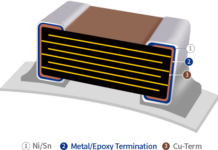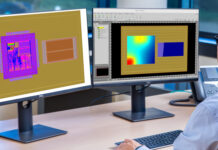A team of engineers has developed a new way of 3D-printing metals that could improve on existing, laser-on-powder based methods. It relies on using semi-solid metals that are solid at rest, but can flow when force is applied, making it possible to move through the nozzle of a printer. Researchers at Lawrence Livermore National Laboratory (LLNL) hope that the process could lead to higher-quality and lighter metal parts.

The team, along with collaborators from Worchester Polytechnic Institute, call the new approach “direct metal writing.” Rather than starting with a metal powder as in currently popular 3D-printing techniques like selective laser melting (SLM), a block of metal engineered to be shear thinning is heated until it becomes semi-solid.
Being shear thinning means that it acts a little bit like paste when heated ? solid metal particles are surrounded by a liquid metal and the solids clump up when at rest, but when force is applied, those solids break apart and flow along with the liquid metal. The effect can be seen in the video below.
These properties allow the metal to flow through a nozzle. The printed object then hardens as it cools, leaving fewer potential defects than with other flash melting techniques like SLM, according to the researchers.
“The main issue was getting very tight control over the flow,” said LLNL engineer Andy Pascall. “Now we’ve gotten such good control that we can print self-supporting structures. That’s never been done before.”
There is still more work to be done, however. The engineers hope to refine the process to create higher-resolution objects using materials common to industry like aluminum and titanium. A paper the team published on the advance in the journal Applied Physics Letters describes how the process worked using a mixture of bismuth and tin. The combination has a low melting point and often led to slivers of solid metal getting stuck in the nozzle, forcing the researchers to go through several iterations before getting the process down.
The researchers have already moved on to working with aluminum, which they say will be challenging because of its higher melting point, but it could be potentially attractive for creating parts that can be used in aerospace and transportation.
###NEWS_VIDEO_1###
Source: Lawrence Livermore National Laboratory via New Atlas






